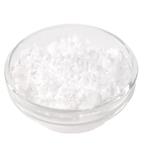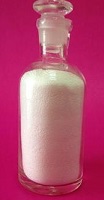1,5-Dimethylhexylamine: properties, applications and safety
General Description
1,5-Dimethylhexylamine is a synthetic compound with stimulant and vasoconstrictive properties commonly used as a dietary supplement and pre-workout enhancer. Its chemical structure is similar to other compounds such as DMAA and amphetamine, which is why it is often classified as a stimulant. 1,5-Dimethylhexylamine has potential benefits in improving physical performance and cognitive function, but caution is advised due to reported health risks associated with similar compounds. In the pharmaceutical industry, 1,5-Dimethylhexylamine serves as an intermediate in the production of octamylamine, a gastrointestinal antispasmodic drug, and plays a role in the synthesis of glycosyl β-amino acids, which exhibit antitubercular activity. The safety of 1,5-Dimethylhexylamine in consumer products requires rigorous scientific evaluation and regulatory oversight to ensure consumer safety.

Figure 1. 1,5-Dimethylhexylamine
Properties
1,5-Dimethylhexylamine is a synthetic compound that belongs to the class of aliphatic amines. It has gained popularity as a dietary supplement and pre-workout enhancer due to its purported properties in improving physical performance and cognitive function. 1,5-Dimethylhexylamine's chemical structure is similar to other compounds such as DMAA and amphetamine, which is why it is often classified as a stimulant. Studies have shown that DMHA can increase focus, energy, and endurance, making it a popular ingredient in pre-workout supplements. DMHA also has vasoconstrictive properties, which means it can cause blood vessels to narrow, resulting in increased blood pressure. However, this effect can be dangerous for individuals with heart conditions or high blood pressure. In conclusion, 1,5-Dimethylhexylamine is a synthetic compound with stimulant and vasoconstrictive properties that is commonly used as a dietary supplement and pre-workout enhancer. While it may improve physical performance and cognitive function, its potential risks and long-term effects on human health require further research. 1
Applications
1,5-Dimethylhexylamine finds various applications in the pharmaceutical and chemical industries. One of its primary uses is as a local anesthetic and vasoconstrictor. Due to its anesthetic properties, it can be employed topically to provide numbing effects in certain medical procedures or relieve pain in specific areas. However, the main application of 1,5-Dimethylhexylamine lies in its role as an intermediate compound in the production of octamylamine, a gastrointestinal antispasmodic drug. Octamylamine works by relaxing the smooth muscles in the gastrointestinal tract, thus relieving spasms and associated discomfort. Additionally, 1,5-Dimethylhexylamine is classified as an aliphatic secondary amine that exhibits leucine aminotransferase inhibition. This characteristic makes it valuable in the synthesis of glycosyl β-amino acids, which have demonstrated potential as antitubercular agents. These glycosyl β-amino acids are compounds that possess activity against tuberculosis-causing bacteria, offering a possible avenue for the development of new treatments for this infectious disease. In summary, 1,5-Dimethylhexylamine serves as a local anesthetic and vasoconstrictor, but its primary application lies in its use as an intermediate in the production of octamylamine, a gastrointestinal antispasmodic drug. Additionally, it plays a role in the synthesis of glycosyl β-amino acids, which exhibit antitubercular activity. 2
Safety
1,5-Dimethylhexylamine is a compound that has gained attention as a potential ingredient in weight-loss and performance-enhancing products. However, its safety has been a topic of concern due to reported health risks associated with similar compounds such as 1,3-DMAA. The consumption of dietary supplements containing 1,3-DMAA has been linked to adverse effects including strokes, heart failure, and sudden death. In response to these concerns, the US Food and Drug Administration (FDA) took action by issuing warning letters and enforcing the removal of 1,3-DMAA from dietary supplements. This was based on the determination that there was insufficient scientific evidence to support its safety as a legal dietary ingredient. Given the similarities between 1,3-DMAA and 1,5-Dimethylhexylamine, caution should be exercised regarding the safety of 1,5-Dimethylhexylamine in consumer products. Rigorous scientific evaluation and regulatory oversight are necessary to ensure the safety of dietary supplements containing 1,5-Dimethylhexylamine and similar compounds. 3
Reference
1. PubChem. COMPOUND SUMMARY: (R)-1,5-Dimethylhexylamine. National Library of Medicine, PubChem CID: 6989209.
2. Wang M, Haider S, Chittiboyina AG, Parcher JF, Khan IA. 1,5-Dimethylhexylamine (octodrine) in sports and weight loss supplements: Natural constituent or synthetic chemical? J Pharm Biomed Anal. 2018 Apr 15;152:298-305.
3. Forrester M. Exposures to 1,3-dimethylamylamine-containing products reported to Texas poison centers. Hum Exp Toxicol. 2013 Jan;32(1):18-23.
);You may like
Related articles And Qustion
Lastest Price from 1,5-Dimethylhexylamine manufacturers

US $10.00-6.00/kg2024-04-02
- CAS:
- 543-82-8
- Min. Order:
- 1kg
- Purity:
- 99%
- Supply Ability:
- 5000 Metric Ton/Month

US $0.00/KG2024-03-16
- CAS:
- 543-82-8
- Min. Order:
- 100g
- Purity:
- 98%+
- Supply Ability:
- 100kg



